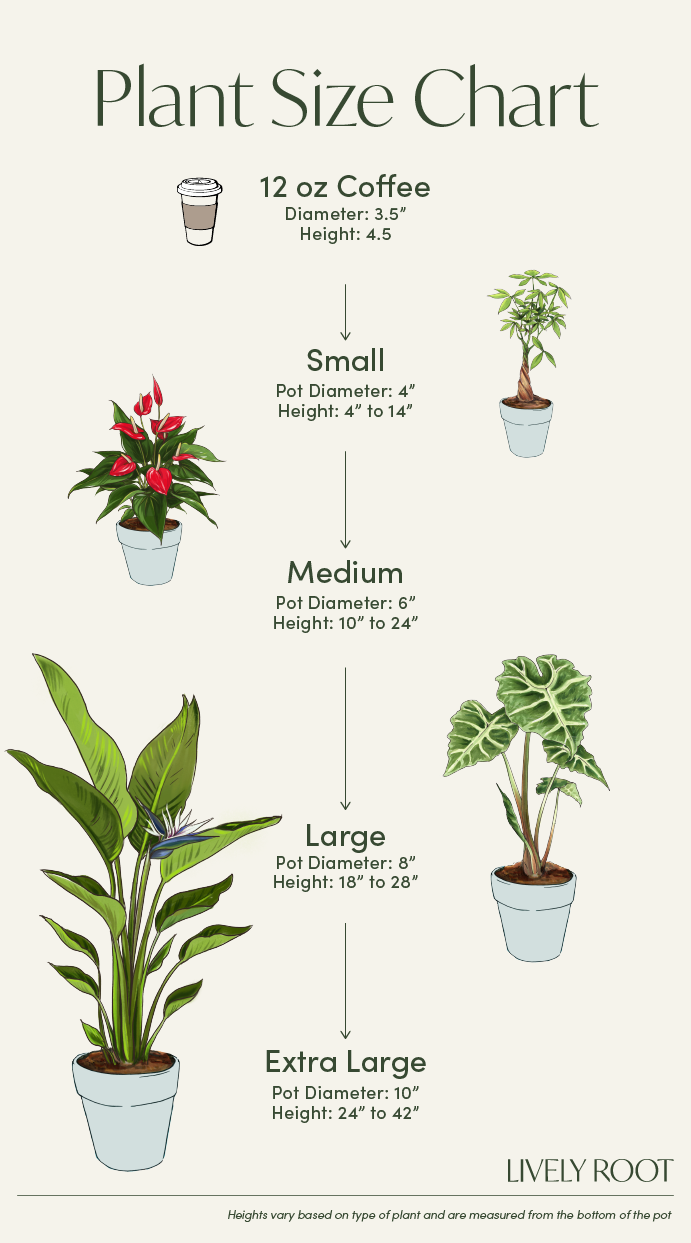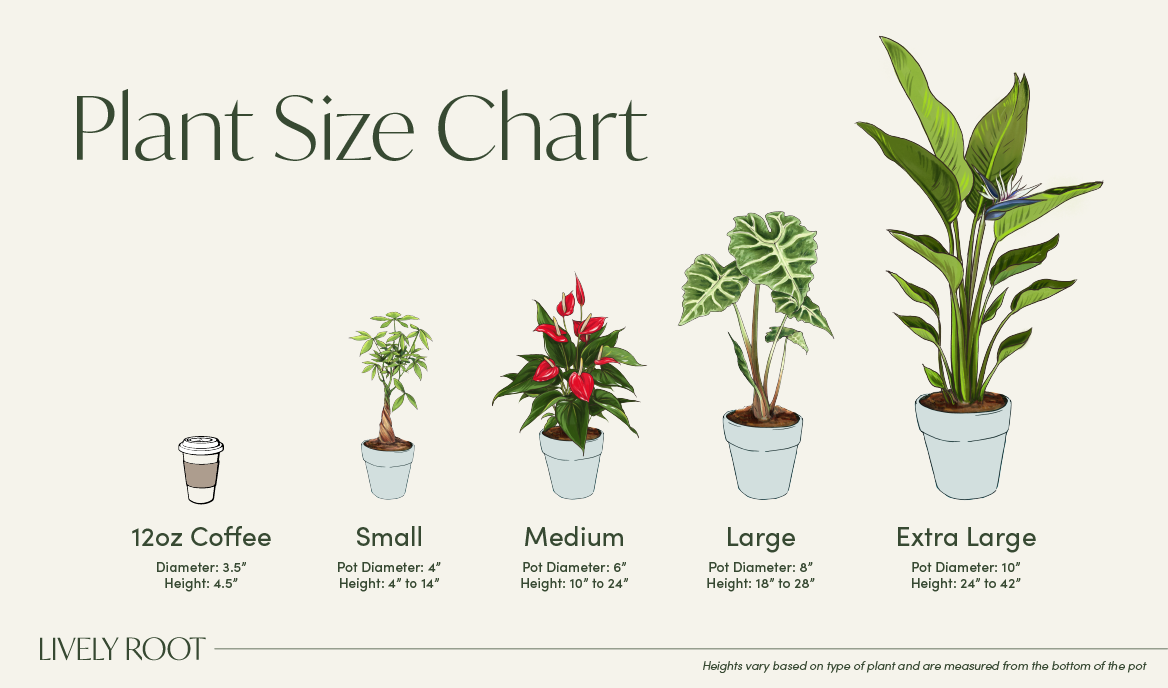

The Pink Polka Dot plant is a stunning beauty and makes a wonderful indoor plant, but you can also grow them annually outdoors in temperate to warm zones. Their foliage is an attractive mix of brightly colored perennial flowers and grows into an attractive mound. This adorable plant offers an amazing contrast to other plants in your Green Space. A native to South Africa, East Asia, and Madagascar, the Hypoestes Phyllostachya or Pink Polka Dot Plant grows to approximately 2 feet tall and wide.
Pink Polka Dot Plant Care Guide & Presentation

Enjoys bright indirect light.
Water well when received, then allow the soil to dry out between waterings. They enjoy being moist, but not wet.
Prefers humidity. Use a water tray for bottom-up watering, this will provide necessary humidity & avoid direct contact between water and leaves.
Keep this plant in rooms where the temperature is a comfortable 65°F-75°F and avoid cold drafts or air vents below 60°F. Boost the humidity level around this plant too.
Outside: Keep in dappled shade (early morning sun) to full shade on a patio out of direct sunlight to prevent leaf burn where nights are above 55°F.
Apply a balanced, liquid fertilizer especially formulated for indoor plants every month during the growing season.
When receiving the Polka Dot Plant, do not repot immediately but wait at least 6-12 months.
Repot in the spring, using a 2 inches bigger pot.
Place a piece of screening at the bottom of the container over the drainage hole to secure the soil and allow to drain. Use a well-draining cacti and succulent potting mix with perlite to help with drainage.
Water your plant in the old pot before transferring over and let sit an hour.
Add cacti and succulent soil to the bottom to elevate the root ball. Lift the plant and release the roots against the existing planter. Use a clean knife or garden trowel to wedge between the pot and the soil to loosen.
Inspect the root ball. Notice if there are any dead or rotting roots and trim off with sterile pruners. If the plant is rootbound, loosen the roots to alleviate continued encircling.
Ensure the plant is sitting about 1 inch below the edge of the pot to avoid water spillage. Add more soil and backfill around the sides by tamping down. Fill up to the soil line but not over.
Water thoroughly, leaving the soil damp but not soggy. If settling occurs, add more soil.
Water well to dampen the soil and let drain.
To keep the plant full and bushy:
Pinch back new growth so branching will occur.
Take 4 inch long cuttings to propagate.
Remove any discolored leaves from the branches or soil.
Replenish soil if needed.
Turn the plant quarter turn each time you water, so they get plenty of light on each side of the plant to maintain their colorful leaves.
Take a stem cutting with sanitized pruners, 4-6 inches long with leaves attached.
Trim off the bottom leaves on the stem.
Use a pot with drainage and place the stem 1-2 inches down into the damp, well-draining, moist potting soil mix and tamp down around the stem to secure.
Place a clear plastic bag over the cutting to mimic a greenhouse and mist the bag. Set in bright, indirect sunlight while they are rooting.
Check the moisture and humidity each day and add misting to keep the soil moist while the roots establish.
After 1-2 weeks, roots will begin to establish. You can tug onto the stem to ensure the roots are secure.
Remove the plastic bag but maintain adequate humidity around the new plant.
Prune from the top of the plant to encourage more branching.
Pink Polka Dot Plant: Overview
The Pink Polka Dot Plant, scientifically known as Hypoestes phyllostachya, is a vibrant and eye-catching foliage plant celebrated for its distinctively dotted leaves. Belonging to the Acanthaceae family, Polka Dot plants are native to Madagascar and thrive in warm, tropical climates (plant zones 9-11).
The Pink Polka Dot plant is known for its colorful foliage. It is favored for its ornamental value and is often cultivated for indoor decoration.
Its moderate care needs make it a popular choice for both beginner and experienced plant enthusiasts. It’s also non-toxic to pets, making it a safe addition to homes with furry companions.
There are a variety of Hypoestes phyllostachya plants, including Camina (dark green leaves with carmine red splashes), Confetti Blush (olive-green pointed leaves with white veins), and the Tricolor Hypoestes plant, known for its striking tri-colored leaves.
Pink Polka Dot Plant: Alternative Names
The Hypoestes plant goes by several delightful alternative names:
- Polka Dot Plant
- Measles Plant
- Freckle Face
- Splash Plant
Polka Dot Plant: Care Guide
The Pink Polka Dot Plant is a relatively easy-going pink plant, making it suitable for both novice and experienced plant enthusiasts. Let’s look at what you need to do to care for your Polka Dot houseplant.
Watering, Repotting, and Soil
Ensure the soil remains consistently moist but not waterlogged by watering when the top inch of soil feels dry to the touch.
When repotting, choose a container slightly larger than the current one and refresh the soil to provide fresh nutrients. Use well-draining soil to prevent water stagnation, which can lead to root rot.
Light and Temperature
Provide bright, indirect light for your Pink Polka Dot plant to thrive. Avoid direct sunlight, as it can scorch the delicate leaves. Maintain a moderate room temperature between 65-75°F (18-24°C), avoiding extreme fluctuations.
Humidity and Environment
Polka Dot plants prefer high humidity levels like their native tropical habitat. Increase humidity by misting the plant regularly or placing a humidifier nearby. Shield the plant from drafts and maintain a stable environment to prevent stress.
Pink Polka Dot Plant: Feeding and Fertilizing
During the growing season (spring and summer), feed your Polka Dot plant a balanced liquid fertilizer diluted to half strength every 2-4 weeks. When growth slows down in fall and winter, reduce fertilization frequency.
Pruning, Propagation, and Maintenance
Regular pruning helps maintain the plant’s compact shape and encourages new growth. Trim leggy stems and promptly remove any yellowing or damaged leaves to maintain the plant’s health and appearance.
Propagation is relatively easy and can be done through stem cuttings. Simply snip a healthy stem just below a leaf node and place it in a jar of water. Once roots develop, transplant the cutting into a small pot with well-draining soil.
Keep the plant clean by wiping the leaves gently with a damp cloth or sponge to remove dust and debris. This improves the plant’s appearance and ensures optimal photosynthesis and overall health.
Regular cleaning also helps prevent pest infestations and diseases. Should you notice any, address the issue promptly.
Pink Polka Dot Plant: Placement, Companion & Alternative Plants
Create a harmonious atmosphere with your Pink Polka Dot plant by selecting the perfect spot to display its vibrant foliage. Enhance its beauty by choosing suitable companion plants to complement its colors and growth habits.
Best Locations & Uses
- Adorn your windowsills or shelves with the Pink Polka Dot plant to add color and vibrancy to any room.
- Create eye-catching terrarium displays by incorporating the Pink Polka Dot plant and other small, decorative plants.
- Perfect for plant enthusiasts with pets, the Pink Polka Dot plant is non-toxic to cats and dogs.
- It is ideal for experienced indoor gardeners seeking a unique and visually appealing addition to their plant collection.
- Enhance office spaces or work desks with the Pink Polka Dot plant to introduce a touch of nature and liveliness to the environment.
Companion Plants
Looking to complement your Pink Polka Dot plant with some equally charming companions? Consider these delightful options:
- Chinese Money Plant (Pilea peperomioides): Known for its unique pancake-shaped leaves, the Chinese Money Plant's minimalist aesthetic adds a contemporary flair to any indoor setting.
- Areca Palm Indoor Tree (Dypsis lutescens): With its soft, delicate textured arching fronds, the Areca Palm is a great indoor house plant that also grows well in the garden in warmer zones of the country. Place it where there is headroom to grow, like in a foyer stairwell, outside porch, or patio area.
- Calathea Medallion (Calathea roseopicta 'Medallion'): Featuring intricately patterned foliage with hues of green and purple, the Calathea Medallion or Peacock Plant complements the Pink Polka Dot plant beautifully, adding an elegant touch to any indoor space.
Alternative Plants
Looking for alternatives to the Pink Polka Dot plant? Here are three pet-safe options available on Lively Root that share similar characteristics in appearance and care requirements.
- Prayer Plant (Maranta leuconeura): Known for its beautiful foliage with intricate patterns, the Prayer Plant offers vibrant colors and interesting leaf movements, making it an excellent substitute for the Pink Polka Dot plant.
- Peperomia Obtusifolia (Peperomia obtusifolia): With its glossy, thick leaves and compact growth habit, the easy-going baby Rubber Plant adds a touch of lush greenery to any indoor space and provides a low-maintenance alternative to the Pink Polka Dot plant.
- Bromeliad Neoregelia (Neoregelia Bromeliad): The Neoregelias Bromeliad is unique because it grows short and wide, making it a statement piece wherever you place it. This pet-friendly flowering houseplant showcases blue or white blooms surrounded by beautiful red or purple inner leaves.
Add a Pink Polka Dot Plant to Your Indoor Greenery
Ready to add some vibrant charm to your indoor space? Get the intriguing Pink Polka Dot plant for your home or office today!


































































